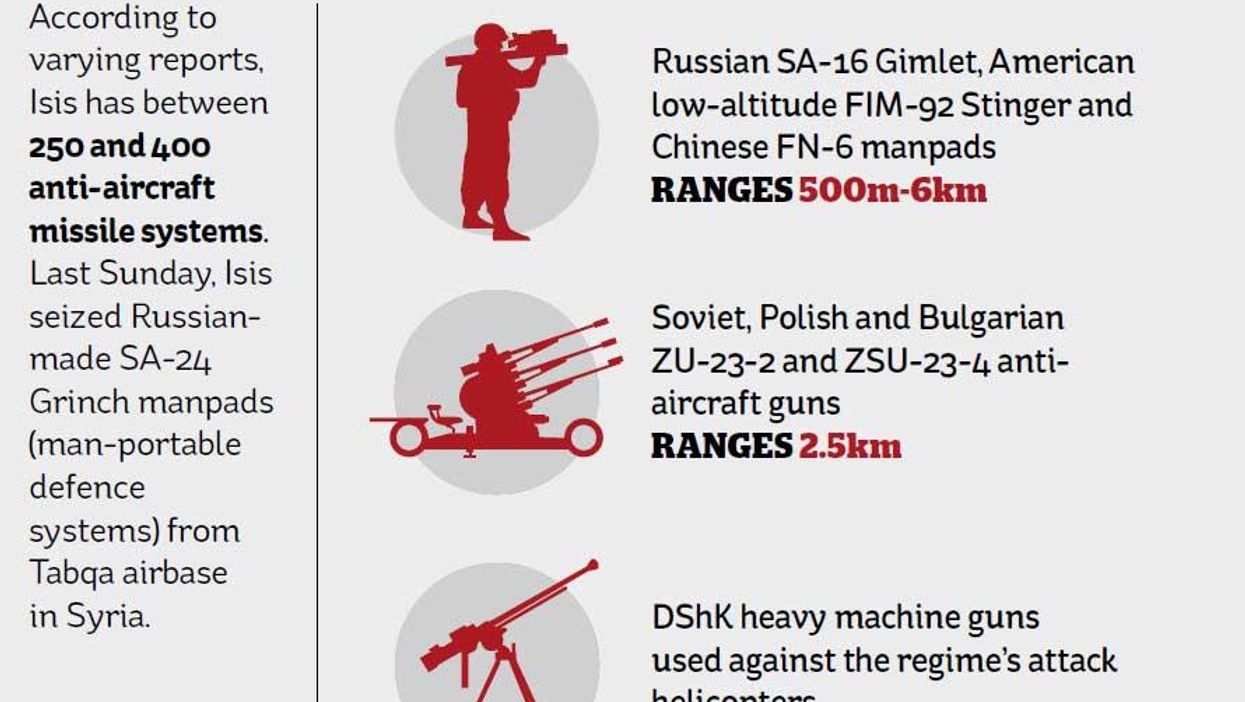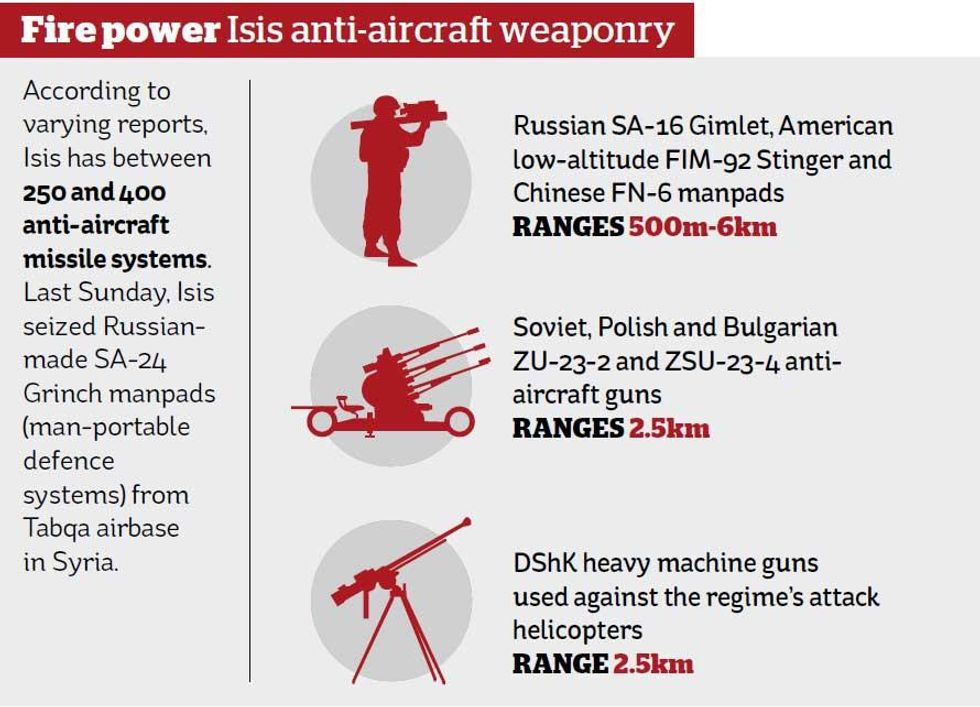News
Kim Sengupta (and Edited
Aug 30, 2014

Last weekend, Isis stormed Tabqa airbase near Raqqa af a long siege and on Thursday it produced a video of the execution of 250 Syrian soldiers after they had been marched semi-naked into the desert.
Shocking as those images were, it is the capture of the Russian SA-24 Grinch shoulder-launched anti-aircraft missiles which is of immediate concern as Barack Obama tries to gather a coalition, including Britain, to carry out air strikes on the Islamist extremists inside Syria.
The Syrian rebels acquired a large part of their arsenal from the Syrian regime. Isis also gained advanced American weapons, including artillery, armoured cars and even a few Abrams tanks from fleeing government forces in Iraq. But, until now, their anti-aircraft capabilities had to depend on elderly stock.
Isis is known to have Soviet, Polish and Bulgarian ZU-23-2 and ZSU-23-4 anti-aircraft guns and American FIM-92 Stinger manpads (man-portable air-defence systems). The specification of the SA-24 states it is "designed for use against visible targets such as tactical aircraft, helicopters, unmanned aerial vehicles, [and] cruise missiles".
The exact numbers of surface-to-air missile systems in the hands of Isis vary between 250 and 400, according to reports.
Will President Obama go ahead with air strikes despite the dangers involved? Aaron David Miller, who advised six American Secretaries of State on the Middle East, said: "In Iraq, the US has several advantages that could make air strikes effective, including reliable Kurdish allies, US-trained Iraqi defence forces, US special operators on the ground. Syria has none of these. But, since Washington can’t sit on the sidelines… the battlefield will be expanded; air strikes in Syria will happen."
Top 100
The Conversation (0)














